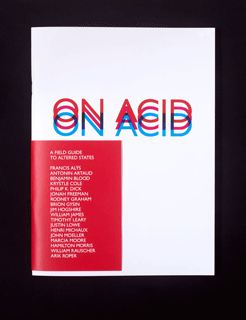
"What was the original Soma? The present consensus is that it was Ephedra. Its active ingredient is ephedrine, which is derived from the stem of the plant. It stimulates the metabolism, raises blood pressure, and has other medical uses. It grows all over the world and is abundant in Central Asia. In 1968, Wendy Doniger published a chapter on "The Post-Vedic History of the Soma Plant," which reviews more than 140 such theories published between 1784 and 1967. The most common candidates include alcoholic beverages and species of Ephedra, Peganum harmala (mountain rue), Sarcostemma, Periploca, and other leafless climbers superficially resembling each other yet belonging to genera botanically far apart. Less common candidates are Cannabis sativa (hemp), the Afghan grape, Calonyction muricatum or Ipomoea muricata, whose seeds are used as purgatives, Eleusine coracana, the common millet, and even "Egyptian beer," a fermentation of date juice and palmyra or coconut palm that was allegedly brought to India from Mesopotamia. Many of these hypotheses are easy to refute (for example, the idea that Soma was a kind of alcohol). The Vedas distinguish Soma from the alcoholic sura drink that produces an evil, dur-mada, form of intoxication, whereas Soma leads to mada--rapture or bliss.
Wasson defended the thesis that the Vedic Soma was the "fly-agaric" mushroom, Amanita muscaria, familiar from the birch forests, alpine meadows, and folklore of the cooler regions of Eurasia from Western Europe to Siberia. The fly-agaric grows in mycorrhizal underground relationship with birches, conifers, and other trees that also grow in the higher mountains of more southerly regions such as the Hindu Kush and Himalayas, regions Indo-Aryan speakers crossed before entering the Indian subcontinent. Summarizing Rigvedic passages, Wasson wrote: "The poets say that Soma grows high in the mountains. They make a point of this. They never speak of its growing elsewhere. They must mean what they say".
A characteristic feature of the mushroom is its brilliant red color. It emerges from the soil as a little white ball, swells rapidly and bursts its white garment, fragments of the envelope remaining as white patches on the red skin underneath. Wasson's magnificent plates of the mushroom depict it and illustrate poetic expressions such as "the hide is of bull, the dress of sheep" (Rigveda 9.70.7). According to Wasson, Soma came in two forms. In the first, the juice itself is drunk; in the second, the urine of a person who has used the first form is drunk. This is not as far-fetched as it may seem. Wasson knew that Siberian shamans chewed the mushroom and others drank his urine. The psychoactive properties are not affected by the process of digestion and toxic side-effects may be lessened. There are other psychoactive substances that have this property, which is referred to as psychotropic metabolite. It may help explain that Indian Prime Minister Morarji Desai (like many others in India and China) drank his own.
"I believe that Soma was a mushroom, Amanita muscaria (Fries ex L.) Quel, the fly-agaric, the Fliegenpilz of the Germans, the fausse oronge or tue-mouche or crapaudin of the French, the mukhomor of the Russians. This flaming red mushroom with white spots flecking its cap is familiar throughout northern Europe and Siberia. It is often put down in mushroom manuals as deadly poisonous but this is false, as I myself can testify. Until lately it has been a central feature of the worship of numerous tribes in northern Siberia, where it has been consumed in the course of their shamanic sessions. Its reputation as a lethal plant in the West is, I contend, a splendid example of a tabu long outliving the religion that gave rise to it. Among the most conservative users of the fly-agaric in Siberia the belief prevailed until recent times that only the shaman and his apprentice could consume the fly-agaric with impunity: all others would surely die. This is, I am sure, the origin of the tabu that has survived among us down to our own day."



No comments:
Post a Comment